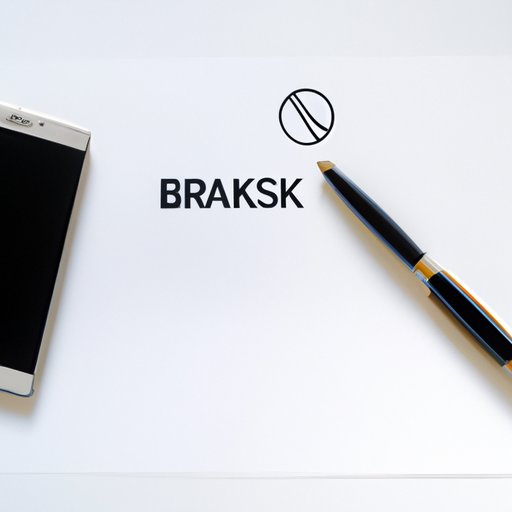
Does Chase Do Money Orders? Everything You Need to Know
Are you in need of a secure way to send money or pay bills but cannot use personal checks? Look no further than Chase Bank’s money orders. Understanding what a money order is and how to get one is crucial to avoid unnecessary fees and bank holds. This article will break down everything you need to know about Chase Bank’s money orders and compare them with other payment methods to help you decide what works best for you.
5 Things You Need to Know About Money Orders at Chase Bank
Before purchasing a money order from Chase Bank, there are some important details to keep in mind. Here are the five things you need to know:
Fees
Chase Bank charges a $5 fee for each money order. This is relatively standard among other banks and financial institutions. It is important to note that the fee cannot be waived or refunded, so make sure you have enough funds to cover the fee and the amount of the money order.
Limits and Restrictions
The maximum amount for a single money order at Chase Bank is $1,000. If you need to send more, you will need to purchase multiple money orders. Additionally, money orders cannot be purchased using a credit card or check–only cash or a debit card. Lastly, make sure the recipient of the money order can cash it before sending it, as some places will only accept money orders from certain issuers.
Cancellation or Replacement
If you need to cancel or replace a money order from Chase Bank, you will need to pay an additional fee of $30. It is important to keep track of your money order and who you give it to–if it gets lost or stolen, there is no guarantee that you will get your money back. Chase Bank will only issue a refund if the money order has not been cashed yet.
Additional Features/Benefits
Chase Bank’s money orders offer a more secure payment method as they cannot bounce like personal checks. In addition, money orders do not have any personal information on them, so they can be sent anonymously. Lastly, money orders can be tracked and traced to ensure the recipient gets the money safely.
How to Get a Money Order at Chase Bank
To purchase a money order from Chase Bank, take the following steps:
- Visit a Chase Bank branch near you.
- Bring the funds you wish to use to purchase the money order in cash or a debit card.
- Provide the name of the issuer to be included on the money order and the name(s) of the recipient(s).
- Pay the $5 fee for the money order.
- Keep the receipt in case you need to cancel or replace the money order.
If you are unsure about the process, ask a representative at the bank or use the automated kiosk to help guide you through the steps.
Alternatives to Money Orders at Chase Bank
If you cannot or do not want to use money orders, there are other payment methods to consider, such as:
Online payment systems (Venmo, PayPal, etc.)
Online payment systems allow you to send and receive money electronically, making them quicker and more convenient than money orders. The downside is that they may charge a small transaction fee.
Wire Transfers
Wire transfers are secure and fast but can be expensive. Some banks may also place holds on the transferred funds to ensure they are legitimate.
Prepaid Debit Cards
Prepaid debit cards work like regular debit or credit cards except that they have a set limit of funds available. They can be helpful for people who do not have or do not want to use their bank accounts for transactions, but may have fees associated with them.
The Pros and Cons of Using Money Orders at Chase Bank
Here’s a quick rundown of the pros and cons of using Chase Bank’s money orders:
Pros:
- Secure form of payment
- No personal information included
- Tracked and traced for added security
Cons:
- Fee of $5 per money order
- Cannot exceed $1,000
- Additional fees for cancellation or replacement
- Cash or debit card only
Overall, Chase Bank’s money orders can be a reliable, low-stress way to send money, especially for people who cannot or do not want to use online payment methods or wire transfers.
Comparing Chase to Other Banks in Terms of Offering Money Orders
Chase Bank is not the only bank that offers money orders. Other major banks such as Wells Fargo, Bank of America, and Citibank do as well. Here are some differences between Chase Bank’s money orders and those of other banks:
- Wells Fargo:
- $5 fee per money order
- Maximum amount of $1,000
- Cancellation fee of $15
- Bank of America:
- $5 fee for non-customers, waived for account holders
- Maximum amount of $1,000
- No fee for cancellation, but must provide original receipt
- Citibank:
- $5 fee per money order
- Maximum amount of $1,000 for non-account holders, $1,500 for account holders
- Cancellation fee of $30 but can be waived under certain circumstances
Ultimately, what bank you choose to get a money order from depends on your individual needs and preferences. Consider the fees, maximum amounts, and cancellation or replacement policies when making your decision.
Conclusion
Purchasing a money order from Chase Bank can be a reliable and secure way to send money when other payment methods are not an option. Remember the key details such as the $5 fee, cancellation policies, and maximum amounts, as well as alternative payment methods. Keep your money order receipt in case you need to cancel or replace it. Make sure to do your research and compare Chase Bank’s money orders with those of other banks to find the best option for you.





